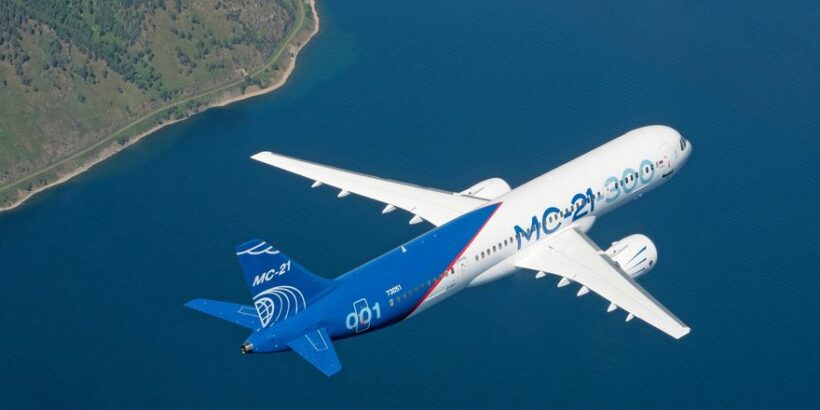Flutter testing of the MC-21 aircraft is an integral part of the comprehensive certification program. These tests are designed to confirm the absence of dangerous structural oscillations within the operational flight envelope. During flight tests, engineers assess the behavior of the wing and control surfaces under aerodynamic loads, as well as the airframe’s resistance to flutter-induced vibrations.
Flutter is a self-excited, undamped aeroelastic phenomenon involving bending and torsional oscillations of aircraft structural components, most notably the wing. These oscillations occur when the aircraft reaches a critical airspeed and can potentially lead to catastrophic structural failure.
Prior to flight testing, extensive ground-based investigations were conducted at the Central Aerohydrodynamic Institute (TsAGI) wind tunnel. A dynamically scaled 1:7 model of the MC-21 underwent testing across a wide range of speeds, up to the equivalent of 683 mph (1,100 km/h) at full scale. These studies enabled the determination of the critical flutter speed and provided insight into how changes in structural stiffness affect flutter resistance.
During flight tests, the full-scale aircraft is equipped with advanced instrumentation capable of recording tens of thousands of parameters in real time. This allows for the detection of any anomalies in the dynamic response of the structure. Special attention is given to high-load conditions and maximum angle-of-attack regimes, which closely simulate real-world operational scenarios.
Flutter evaluation flights include analysis of the interaction between aerodynamic loads and the flight control system. This approach enables assessment of vibration transmission to control surfaces and identification of potentially hazardous phenomena, such as resonant oscillations of the control surfaces and wing panels, which could trigger severe flutter and structural damage.
Flutter testing concludes with verification that the aircraft maintains structural integrity throughout all approved operational regimes and within specified safety margins. The reliability of the airframe is substantiated by both ground-based and laboratory research, as well as by practical flight testing.
A fundamental contribution to the understanding of flutter was made by Mstislav Keldysh, who developed the mathematical theory that allows for precise determination of the critical flutter speed. Keldysh’s work formed the basis for effective countermeasures against this hazardous phenomenon and significantly improved the reliability of Soviet aviation. In recognition of these achievements, he was awarded the Stalin Prize in 1942. His research eliminated a major barrier to the advancement of high-speed aviation, virtually eradicating flutter-related aircraft losses during World War II.
In addition, Keldysh pioneered numerical methods and modeling techniques for flutter analysis using wind tunnels, laying the foundation for a new field in the science of aircraft structural strength. These advancements have had a profound impact on engineering practice.


